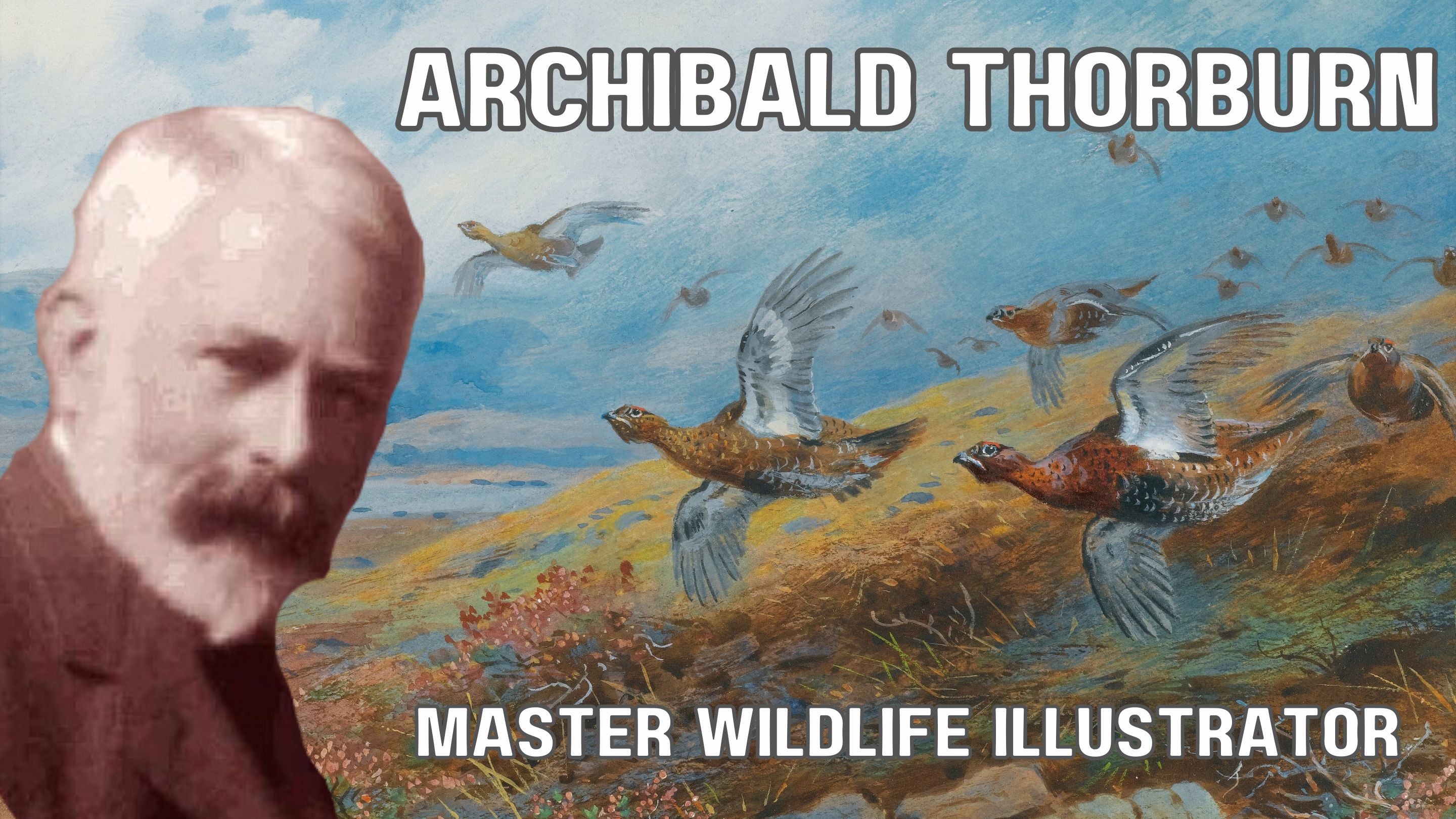Table of Contents:[hide]
Archibald Thorburn (1860–1935) remains an iconic figure in the world of wildlife illustration, renowned for his exquisite depictions of birds and animals. This article delves into the life, artistic contributions, and lasting legacy of this master illustrator.
Early Life and Artistic Beginnings
Archibald Thorburn's journey as an artist began in 1860 in Lasswade, Scotland. Growing up surrounded by the picturesque landscapes of the Scottish countryside, Thorburn developed a deep appreciation for nature. His early passion for birds and wildlife manifested in his sketches, revealing an innate talent that would later define his illustrious career.
Formal Education and Artistic Development
-
Early Education (1880–1883): Thorburn's formal education took him to the Royal Academy Schools in London, where he honed his artistic skills. The exposure to a vibrant artistic community in London significantly influenced his style, instilling in him a commitment to realism and attention to detail.
-
Inspiration from the Masters: During his formative years, Thorburn drew inspiration from renowned wildlife artists such as Joseph Wolf and John James Audubon. This period of study and inspiration laid the groundwork for the distinctive blend of accuracy and artistic flair that would characterize his work.
The Ornithological Influence
Thorburn's contributions to ornithology were as significant as his artistic achievements. His illustrations in prominent publications, including the revered "Birds of the British Isles," collaborated with notable ornithologists, establishing him as a trusted illustrator among scientific communities.
Collaborations with Ornithologists
-
Thorburn and Charles Dixon: Notable among Thorburn's collaborations was his work with Charles Dixon, a prominent ornithologist of the time. Their partnership resulted in illustrations that not only showcased Thorburn's artistic prowess but also contributed to the scientific understanding of bird species.
-
Scientific Accuracy in Illustrations: Thorburn's commitment to accuracy extended beyond aesthetics. His meticulous attention to anatomical details and behavioral nuances in his illustrations provided valuable insights into the world of birds, earning him acclaim in both artistic and scientific circles.
Thorburn's Artistic Style and Technique
Thorburn's artistic style is characterized by a harmonious blend of precision and aesthetic sensibility. His use of watercolors brought life to his subjects, capturing the essence of their natural habitats with unparalleled finesse.
Watercolor Mastery
-
Techniques and Materials: Thorburn's mastery of watercolors was central to the allure of his artworks. His use of high-quality pigments and specialized brushes allowed him to achieve the vibrant hues and delicate details that define his signature style.
-
Capturing Wildlife in Motion: What sets Thorburn apart is his ability to depict wildlife in dynamic poses, showcasing their natural behaviors. His keen observation of animals in their habitats translated into illustrations that not only documented species but also conveyed a sense of life and movement.
Legacy and Lasting Impact
The legacy of Archibald Thorburn extends far beyond his lifetime, influencing generations of artists, naturalists, and conservationists. His commitment to both artistic excellence and scientific accuracy continues to resonate in the world of wildlife illustration.
Influence on Contemporary Artists
-
Modern Wildlife Illustrators: Many contemporary wildlife illustrators acknowledge Thorburn's influence on their work. His emphasis on capturing the essence of animals in their natural settings remains a guiding principle for artists seeking to bridge the gap between art and science.
-
Conservation Advocacy Through Art: Thorburn's work not only celebrated the beauty of wildlife but also contributed to early conservation efforts. His illustrations served as a visual testament to the importance of preserving natural habitats and the diverse species that inhabit them.
Archibald Thorburn's Popular Works
Thorburn's extensive body of work includes a myriad of illustrations that have become iconic representations of wildlife. Several pieces have gained widespread acclaim, solidifying his status as a master wildlife illustrator.
Notable Illustrations
-
"The Partridge" (1896): One of Thorburn's celebrated works, "The Partridge," captures the intricate details of this game bird in its natural environment. The composition and use of color showcase Thorburn's ability to merge scientific precision with artistic finesse.
-
"Red Grouse in Flight" (1910): This dynamic illustration expertly captures the grace and power of grouse in flight. The sweeping strokes of Thorburn's brush convey a sense of motion, making the viewer feel the energy and freedom of the birds in their natural element.
FAQs – Exploring Archibald Thorburn's World
1. How did Archibald Thorburn contribute to ornithology?
Archibald Thorburn's collaboration with ornithologists, such as Charles Dixon, involved creating scientifically accurate illustrations for publications like "Birds of the British Isles." His detailed depictions of birds contributed to the understanding of various species.
2. What artistic techniques did Thorburn employ?
Thorburn was a master of watercolors. His use of high-quality pigments and specialized brushes allowed him to capture vibrant hues and intricate details. His ability to depict wildlife in motion set him apart, showcasing his keen observation skills.
3. How did Thorburn's art influence conservation efforts?
Thorburn's illustrations served as powerful advocates for conservation. By showcasing the beauty of wildlife in its natural habitat, he raised awareness about the importance of preserving ecosystems and protecting endangered species.
4. Who were Thorburn's artistic influences?
Thorburn drew inspiration from renowned wildlife artists such as Joseph Wolf and John James Audubon. These influences, combined with his formal education at the Royal Academy Schools, shaped his commitment to realism and attention to detail.
5. What is the significance of "The Partridge" and "Red Grouse in Flight" among Thorburn's works?
"The Partridge" and "Red Grouse in Flight" are iconic illustrations that showcase Thorburn's mastery. The former highlights his ability to capture intricate details, while the latter exemplifies his skill in conveying motion and energy in wildlife scenes.
In conclusion, Archibald Thorburn's impact on the world of wildlife illustration and ornithology is profound and enduring. His ability to seamlessly blend scientific accuracy with artistic brilliance has left a lasting impression on generations of artists, naturalists, and conservationists. As we celebrate his contributions, we also acknowledge the importance of preserving the delicate balance of nature that Thorburn so eloquently captured in his timeless works.





